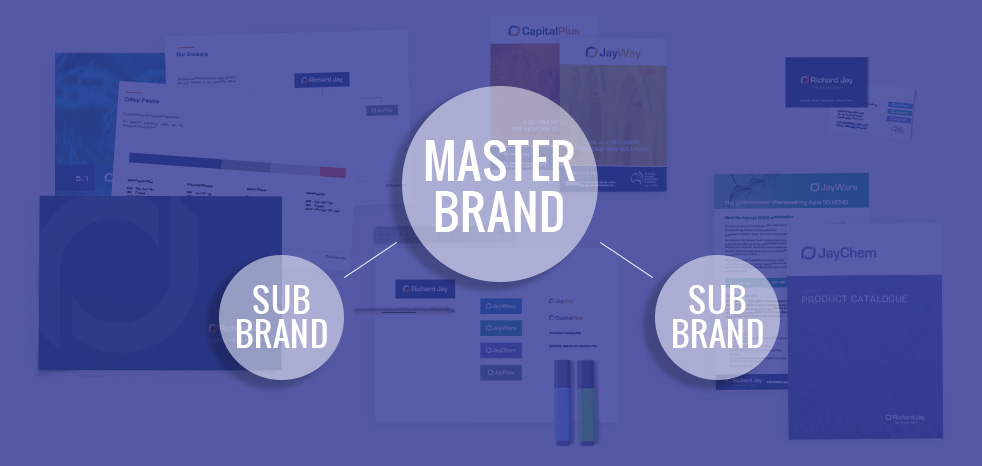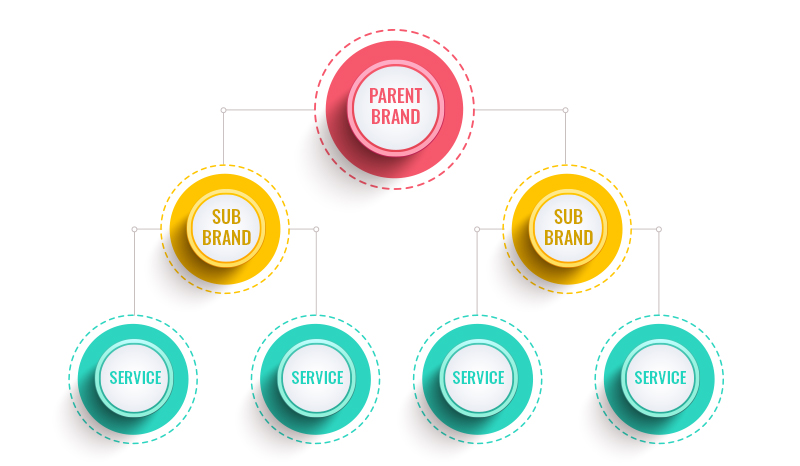 11
Oct, 2018
11
Oct, 2018
Many established SMEs feel confused about how to carry existing branding and aesthetics through to new divisions and products. A brand agency can help you handle this type of expansion seamlessly.
At Sketch Corp, we are regularly engaged to help successful SMEs make sense of their branding and revise their brand architecture to accommodate growth.
The scenario is usually this…
Historically, the business in question will have always used established branding to represent one type of product, service or positioning in the industry. Now that the company is planning to launch a new division or product, they have questions:
- How do I use the same logo to represent new and different offerings?
- Do I need to create an all-new aesthetic (i.e. logo design) for each new division offering?
- Can I keep my original aesthetic structure and just change up the colours?
Usually when a brand agency is engaged, the client is confused because they have a plethora of branding elements (logo, brand pattern, key messages, colour palette, etc) however they’re not sure how they can be applied to new products and divisions.
If your business is confused about how to expand aesthetically, there’s every reason to be optimistic – not disheartened. Here’s how we advise our clients to approach the expansion process initially.
Identify your ‘master brand’
A master brand is a specific overarching brand at the top of a branding hierarchy that serves as your business’s main anchoring point. All underlying divisions or products branch out from here. It’s important to identify your ‘master brand’, which clients sometimes refer to as ‘the parent company/brand’. Often this encompasses your original logo aesthetic.
The process of ‘master branding’ attempts to create a strong association between a company’s products and what the brand represents.
If, for instance, you have three brands and you’re not sure which one is the ‘master’, this is an issue. You either have three standalone companies or three separate divisions that need an overarching master brand to unite them.
A good way to identify your master is to think back to when your business started. What was the core brand then and what did it embody? What did you primarily sell or how did you serve your customers? If you know the answer, put this brand at the top. This is your master brand – a singular corporate trademark to link a variety of capabilities or products. A brand agency can assist you with this process.
The point of all this is for consumers to consistently associate everything you offer with the qualities of your flagship ‘master’ brand.
Sounds simple enough, doesn’t it? But the process is not always so straightforward.
Sort through your multiple ‘mini-brands’ (if you have them)
Here’s a fictional scenario that sometimes plays out in real life:
“I started a business in 2000 called ABC Business. In 2005, I launched a new division called ABC BUSINESS 2 and designed a new logo for it. I launched another new division in 2007 selling an entirely new product called ABC BUSINESS 3. I created a new division for this and a new logo for the product. By 2010, ABC Business 3 was more profitable than ABC Business and ABC Business 2 combined.”
What do you do in that situation? How do you structure your branding architecture? It’s an interesting one and not as uncommon as you might think. At our brand agency, we’ve encountered similar cases more than once.

Important things to consider from a brand architecture point of view:
-
Is being associated with ABC Business or ABC Business 2 damaging or helping ABC Business 3? If it’s the former, consider making this brand separate from the master brand by giving it its own aesthetic and personality. This means that when it’s referenced in the marketplace, it wouldn’t be in conjunction with the master brand. It would stand alone.
-
If ABC Business 3 does benefit from being associated with its parent brand, it would instead become an important sub-brand.
Understand your sub-brand/s
In a company’s brand architecture, sub-brands work symbiotically with the parent brand – offering support as well as deriving benefit.
Each sub-brand embodies qualities that link it to the master brand, yet each has its own distinct identity with traits that reinforce the values of the master brand.
If they are to flourish and make your main brand proud, you must give your sub-brands care and attention. They form a vital part of your brand architecture.
Develop a ‘brand bible’ of correct usage and brief your staff
You’d be surprised at how many meetings our brand agency has attended where the business owner clearly explains the parent company and sub-brands while employees sitting around the table exclaim, “Oh really, I never knew that!” We also receive lots of phone calls from business owners or senior managers confessing that they don’t understand why certain sub-brands exist within their company.
From a branding point of view, it is vital that your staff promote your brand with a clear understanding of your business. If you’ve had to sit down with your team numerous times to explain how your business works, your brand story may be too convoluted and in need of refinement. A brand agency can clarify your core messages so the people who work for you can comprehend them and spread your message accurately.
When we work with clients, we always deliver a clear brand architecture document complete with visual elements, brand positioning and key messages. This maps the master brand and sub-brands/companies to provide a framework for how to successfully launch new products and services, and grow your business.

